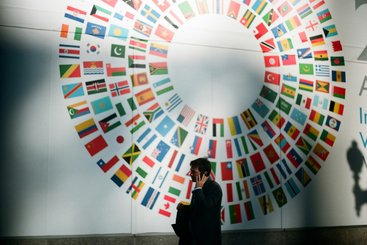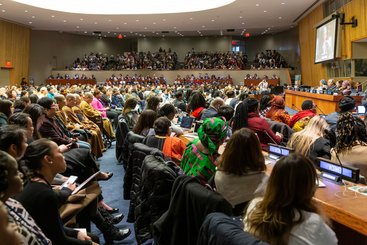The financial capacity of multilateral development banks (MDBs) is on the minds of many in the G20 and development community, as part of the discussions to support recovery from the Covid-19 crisis and build back better. MDB lending headroom is only one part of this much larger puzzle, but it is a critical one given that their global reach, technical expertise and focus on public good provision makes MDBs central to the international agenda.
Can MDBs lend more with their existing capital, or do they need more capital from their country shareholders? The short answer is that no one is quite sure, because there is no widely agreed method for evaluating how much MDB capital is “adequate” for a given level of lending. Many member governments have long suspected that capital adequacy policies might be too conservative and that MDBs could safely lend more without threatening their AAA bond rating.
MDB shareholders with the backing of the G20 and G7 should commission an external agency with a high degree of credibility to review the capital adequacy of MDBs. Such a review would not be binding in a regulatory sense, but it would provide benchmarks to help shareholders better understand MDB capital needs and lending capacity. It would also encourage convergence among the currently wildly disparate MDB evaluation methodologies used by credit rating agencies.
An external review has been proposed in the past and was supported by the G20’s Eminent Persons Group in 2018. MDB finance teams have long resisted, but it is time to push past that resistance. The stakes are too high.
The Problem: Evaluating MDB Capital Adequacy is no Simple Task
MDBs have a number of unique characteristics that make evaluating their capital adequacy particularly difficult compared to commercial banks, including:
- A mandate for development rather than financial profit
- Official status based on international treaty
- Shareholding in which main “customers” are also part owners
- Huge sums of callable capital, which has no analogue in commercial banks
- Loan portfolios concentrated in a very small number of borrowers
- Strong loan repayment record based on informal preferred creditor status
- Lack of regulatory oversight
In past decades, it was sufficient for MDBs to have the support of major G7 nations (notably the US) to obtain access to bond markets for their funding. This was further supported by their “statutory limits”, a simplistic ratio included in each MDB’s articles of agreement limiting their loan exposure to no more than subscribed capital. The statutory limits bear no relation to current market practices, and are ignored by capital market investors and irrelevant to MDB capital adequacy models.
While generally taking a similar conceptual approach, each MDB has their own particular methods and these are not made public. This makes it very difficult for shareholders to judge the appropriateness of these models or to compare the capital adequacy of different MDBs.
The major credit rating agencies—Standard and Poor’s (S&P), Moody’s and Fitch—also have their own methodologies to evaluate MDB capital adequacy and creditworthiness. These methodologies often pull MDBs in different directions. To give one example, the African Development Bank (AfDB) is currently seeking temporary callable capital to address one particular ratio in Fitch’s methodology. To give another, exposure exchange operations to swap loan risk among MDBs—undertaken first in 2015 and again at the end of 2020—are designed specifically to address the penalty assessed by S&P for loan concentration risk.
Ratings agencies and the MDBs evaluate one key factor--callable capital--very differently. Ratings agencies factor in a portion of highly rated MDB callable capital into their calculations, while the MDBs do not. Under S&P’s methodology, if the World Bank’s main lending window incorporated AAA and AA+ callable capital into its capital adequacy models, it could more than double its loan portfolio to $535 billion from the current $215 billion (based on June 2020 financial statements) without affecting its AAA rating.
The MDBs are thus in the odd position of trusting their own callable capital less than the rating agencies. In fact, when S&P put out a commentary in 2016 pointing out the extra headroom available under their methodology, rather than welcome this vote of confidence MDB risk teams actually fought against S&P and pressured it to water down its estimates in a subsequent note.
Ratings agencies have faced legitimate pressure in the wake of the 2008 financial crisis to make their methodologies more replicable and transparent. But MDBs are not easily comparable to commercial banks, and have no financial regulator like the Basel Committee or central banks to provide signposts on how to evaluate them. The agencies have revised their MDB methodologies several times in recent years in an effort to improve them, while also incorporating ever-greater space to make subjective judgments.
The result is uncertainty and caution, to the detriment of MDBs’ ability to respond to global needs. As detailed in a recent ODI report, MDBs have not stepped up in the wake of the Covid-19 crisis, and management concern about maintaining capital adequacy buffers is a key reason.
Part of this conservative approach derives from the interests of a few major shareholders who have pushed MDBs to operate very conservatively to avoid an even remote chance of a call on callable capital. This has led to the perverse outcome that callable capital—designed to give MDBs greater financial security and thus be able to accomplish more—has instead become a reason for MDBs to do less. As well, MDB management is protective of the autonomy that bond market funding provides, and often seems to prefer requesting more capital from shareholders rather than pushing capital adequacy policies.
Commission an External Review of MDB Capital Adequacy
One way to reduce this confusion is to commission a credible external agency to undertake a thorough review of how MDB capital adequacy is calculated. Efforts have been made by the central banks of Canada and Italy, but a broader push including multiple stakeholders is needed to lead to real change. The two likeliest candidates would be the Financial Stability Board established by the G20 or the Basel Committee on Banking Supervision, due to their expertise and international standing.
The aim of such a review would be threefold. First, it would provide MDB shareholders and the international community a clearer sense of what MDBs can do with a given amount of capital, thus placing debates about aligning MDB capital and development goals on sounder footing. Second, it would allow shareholders to more systematically compare the capital adequacy approaches of different MDBs and pose better-informed questions to MDB management about financial policies. Third, it would provide credible guidelines on how to address specific aspects of MDB finance and operations that would promote a convergence and rationalization among credit rating agency methodologies for MDBs, reducing the “model risk” of currently widely divergent existing methodologies.
To achieve these goals, such a review should:
- Cover a range of MDBs, rather than one specific institution
- Encompass an extended time period to fully capture MDB performance across different periods of national, regional and global crises and in different global economic conditions.
- Have detailed terms of reference to examine the unique attributes of MDBs vis a vis commercial banks, including capital structure, operational mandates, structural portfolio characteristics and official relationship with borrower governments.
- Include quantitative and qualitative analysis of capital market actors and trends to better understand the appetite for and perception of MDB bonds.
MDB risk and treasury teams have resisted an external review in the past, and can be expected to do so again. MDB financial staff have repeatedly said that they do not believe any external agency can adequately understand the peculiarities of the MDB model. As well, such a review may be perceived as a step toward financial regulation of MDBs, which they might fear would restrict their autonomy. It is essential to carefully design terms of reference to take these concerns into account, and to explicitly state that the results are not intended to infringe on the final authority of shareholders over MDB policy.
World Bank did commission an external review in advance of the 2018 capital increase. While useful for internal purposes, this review was inadequate to fulfill the goals outlined above. First, it looked only at the World Bank Group, and thus was not useful for a broader conceptual rethinking of MDB capital adequacy. Second, it was undertaken by a private consulting firm hired by the Bank itself, leading some to question its objectivity and reducing its credibility to influence broader discussions on how to evaluate MDB financial capacity.
Ratings agency staff in charge of MDBs at all three major agencies have said that they would welcome an external review and would take results into account in future methodology revisions. They are well aware of the complexity of MDBs, and are uncomfortable with being perceived by MDB management and shareholders as de facto regulators. As one analyst said, “Having an impartial and highly-respected third party look at these risks would be helpful. We don’t want to be a regulator.” A credible external review would provide useful benchmarks to orient rating agency approaches to issues like callable capital, preferred creditor status and concentration risk.
A New Approach is Urgently Needed to MDB Capital Adequacy
Having a clear understanding of the financial capacity of MDBs is essential to the discussions around development finance in the coming years. An external review of MDB capital adequacy by a well-respected agency not a magic bullet, but it is a step in the right direction. As the G20’s Eminent Persons Group report notes, an independent review “would promote the adoption of harmonized capital and liquidity approaches across the system, and provide a basis for rating agencies to also review their rating methodologies for MDBs.” It is time for MDB shareholders, with the support of the G20 and G7, to push ahead with a review.



